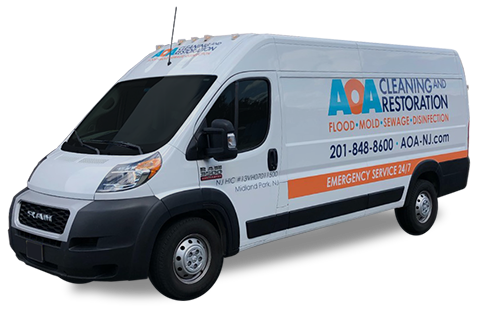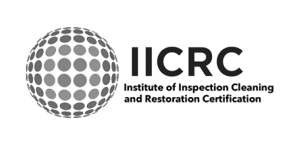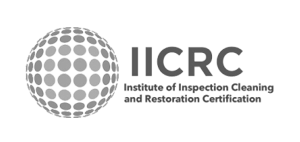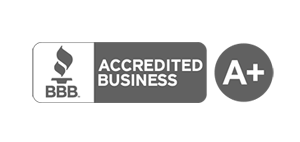Did you know that about 70% of homes in the United States have mold? This is surprising and shows we need good ways to remove mold and prevent it on walls. Mold looks bad on walls and can be harmful to our health. Knowing why it grows and how to remove it can save your home and money.
Mold needs three things to grow: organic materials, moisture, and oxygen. The most common reason for mold in homes is not enough ventilation. This leads to moisture buildup, often seen around windows. It’s important to know how to remove mold to keep your home healthy.
Key Takeaways
- Humidity levels in a home should ideally be maintained between 30-60% to minimize the risk of mold growth.
- Stachybotrys Chartarum, commonly known as toxic black mold, can cause severe health issues, making its removal a high priority.
- Mold can start growing on walls within 24 to 48 hours of water damage, making timely action critical.
- Professional mold removal costs can range from $500 to $6,000 depending on the severity of the issue.
- Proper mold removal involves addressing the underlying moisture problem, not just cleaning the surface mold.
Understanding Mold Growth on Walls
It’s important to know why mold grows on walls to fix the problem. Mold can show up in any home, no matter how old or where it is. To manage mold, we need to find out why it starts, know the health risks, and understand the different kinds of mold.
Causes of Mold on Walls
Mold grows on walls because of too much moisture. This moisture can come from leaks, high humidity, or condensation. Keeping humidity levels between 30% and 50% helps prevent mold. Water stains on walls are a sign of moisture and need to be checked often.
Health Risks Associated with Mold
Mold on walls can be harmful, mainly to people with weak immune systems. Exposure to mold like black mold can cause serious health problems. It’s important to deal with mold quickly to keep everyone healthy.
Types of Mold Found Indoors
Many types of mold can be found inside, each with its own challenges. Cladosporium and Penicillium are common, while black mold thrives in damp places. Mold can grow quickly, becoming visible on walls in just a few weeks. Knowing the type of mold helps find the best way to get rid of it. Regular checks, more so in humid areas, can catch mold early and stop it from spreading.
How do I get rid of mold on my walls?
Removing mold from walls needs careful steps to keep you safe and effective. Mold grows in damp, humid places. It can harm your health and damage your home if not treated.
Safety Precautions Before Mold Removal
It’s key to wear the right gear when dealing with mold. Use gloves, a mask, and goggles to avoid breathing in mold spores. Make sure the area has good air flow by opening windows and using fans.
If the moldy spot is over 10 square feet, get professional help. They have the tools and knowledge for safe and complete removal.
DIY Mold Removal Methods
For small areas, you can try removing mold yourself. A simple and effective method is using a bleach solution. Mix ¾ cup of bleach with a gallon of water, or for smaller spots, use 3 tablespoons of bleach in 1 quart of water.
Apply the solution to the mold, wait five minutes, then scrub. Vinegar is also great for removing mold, but you might need to scrub more to get rid of dark stains. Hydrogen peroxide (3% solution) works well too, but you’ll need to apply it several times because it acts slowly.
Best Mold Cleaners and Products
Choosing the right mold cleaners is important for getting rid of mold. Chlorine bleach is the top choice for killing mold spores at home. Distilled white vinegar and hydrogen peroxide are also good options because they’re effective and safer.
For tough mold, look for specialized products in stores. Using mold-resistant paint in humid areas can also help stop mold from coming back.
Professional Mold Removal Services
If mold covers a big area or DIY methods don’t work, get professional help. Experts use special tools and techniques, like HEPA filters, for safe and thorough removal. They can find hidden mold, fix water damage, and help prevent mold from coming back.
It’s wise to hire professionals for big mold problems to keep your home safe and healthy. The U.S. Department of Environmental Protection says getting help from experts is essential for mold over 10 square feet.
Conclusion
Dealing with mold on walls is key to a healthy home. Knowing why mold grows, like high humidity and leaks, helps prevent it. Keeping moisture levels low is critical, as mold loves humid places.
Regular checks and fixing leaks quickly are important steps. This helps stop mold from growing.
When you find mold, you might wonder how to get rid of it. For small spots, DIY solutions like baking soda and vinegar work well. Dehumidifiers also help by reducing moisture.
But for big mold problems, you need a pro. This is true for mold that covers over 10 square feet or goes deep into walls.
Using mold-resistant paints and materials helps protect your home. This is important in wet areas like bathrooms and basements. Also, using exhaust fans and keeping humidity below 60% stops mold.
Homeowners should watch out for mold. It damages homes and can harm health, more so in humid places like Alabama. By following these tips, you can keep your home safe and healthy.




















